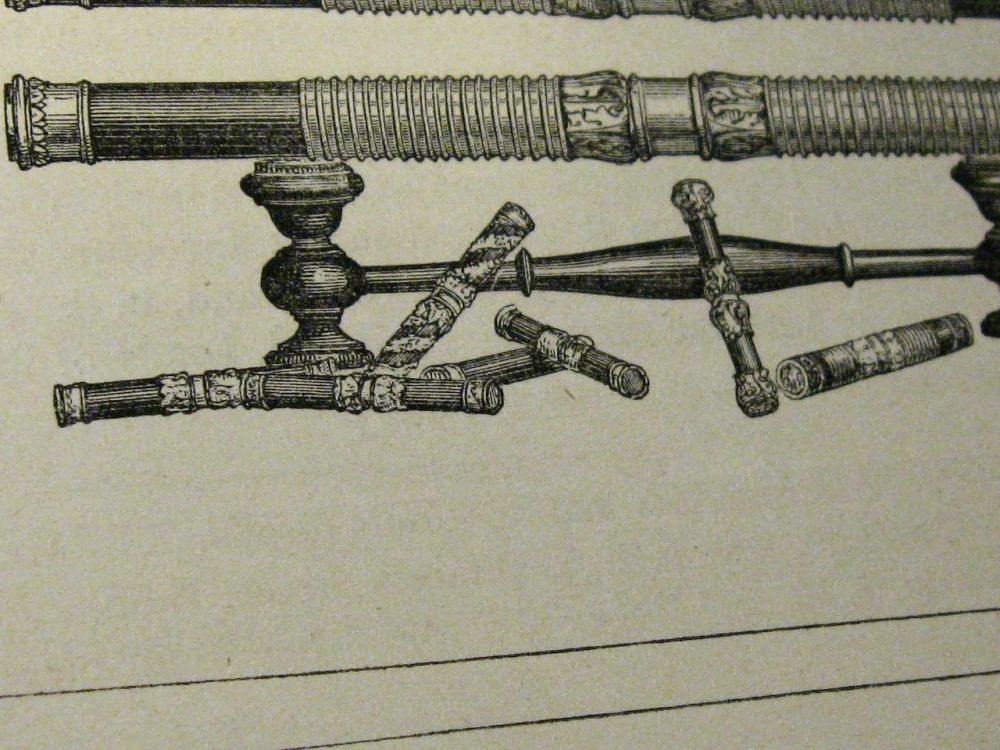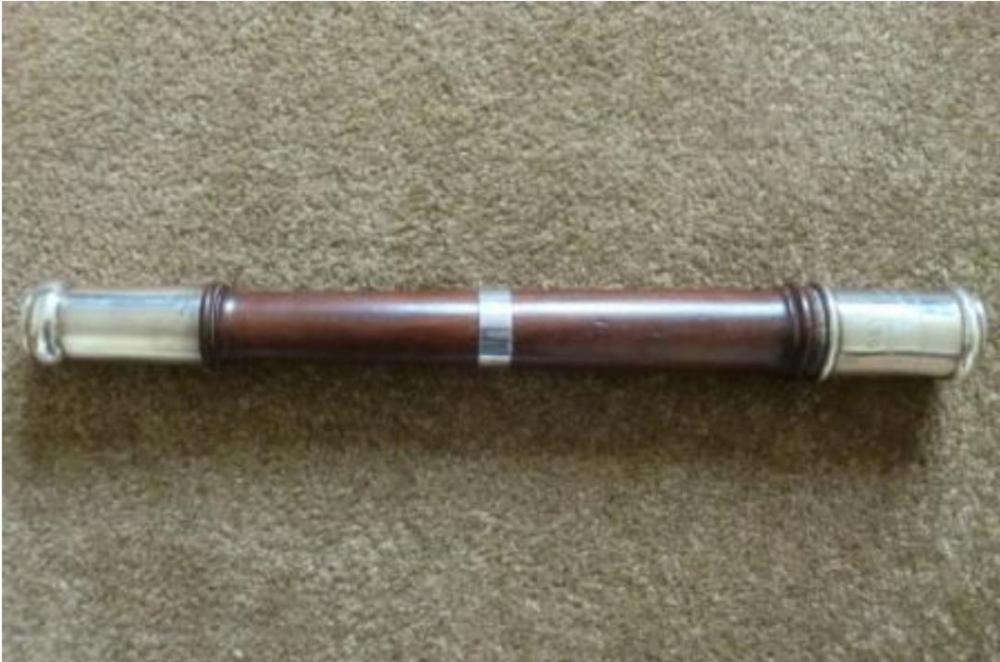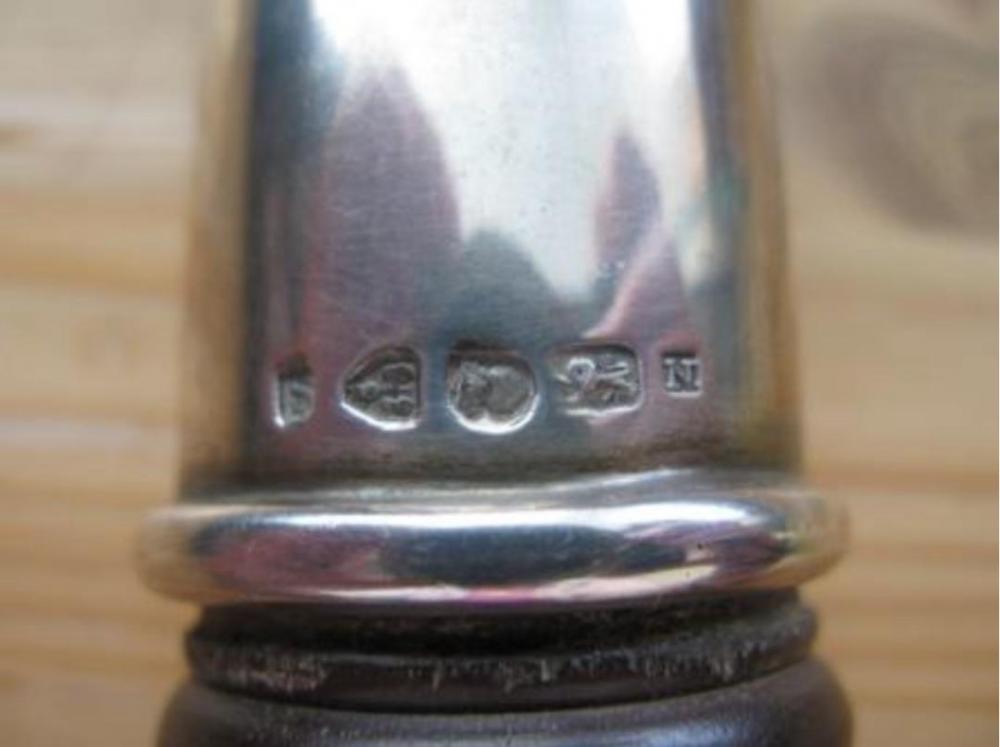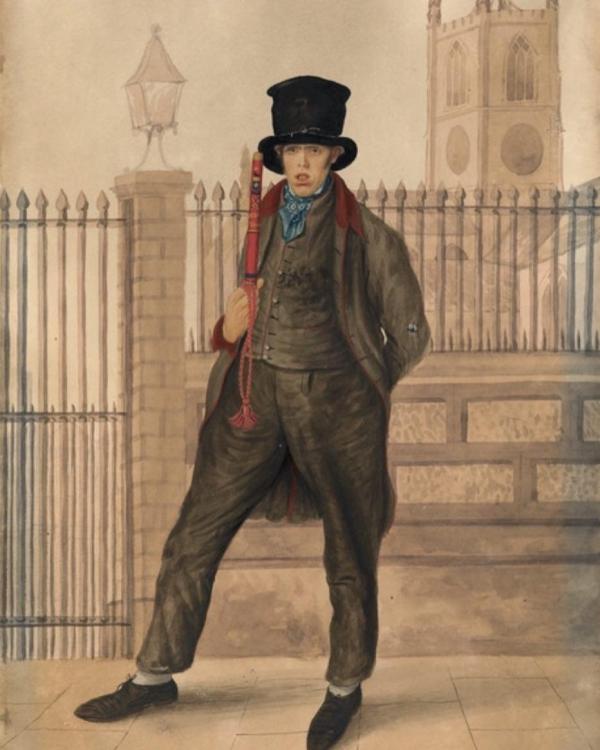-
Posts
45 -
Joined
Content Type
Profiles
Forums
Blogs
Gallery
Events
Store
Everything posted by CollectorInTheUSA
-
I'm not sure why this would be confusing? The St Edward's Crown is the one used for Coronations, and has been since the 1600's. Maybe some will be confused because it has been nearly 70 years since we had a Coronation, so they are not knowledgeable about the subject, but I'm sure by the time it's all said and done, most everyone will be well-versed in the ins-and-outs of Coronation Regalia.
- 1 reply
-
1
-
Simius Rex: to be quite honest, I'm now "getting disappointed and a bit annoyed" at the tone of voice you used in your reply... I know it's easy online to slide into sounding rude, hostile, and condescending, but you should know better. So, stop typing in ALL CAPS, stop putting words into peoples' mouths, and practice kindness in your online activities on a fraternal forum.
-
Again, I don't disagree that collectors everywhere should do their homework, buy books, read, compare, that's a given. Those collectors who don't do any of that, will probably regret it at some point or another. What I am disagreeing with, is "victim shaming" which is blaming the victims, for the actions of the criminals. I see that a lot on collector forums, with people saying "it's your fault if you buy a fake". That's a load of rubbish. Criminals will always find a new way to defraud, and most regular people will never be able to learn enough to avoid the criminals every time. This thread makes that point itself, when it says that the criminals are learning, and making better fakes all the time. So that's why we have police, license-granting authorities (that give auctioneers a license to operate), antique dealer associations, and finally, and very importantly, forums and threads like this one, which seek to educate collectors about frauds. Trust me, if you buy a fake from an auctioneer and they refuse to make it right, and you threaten them that you will file a police report about it, and complain to the organization that gave the auctioneer the license to operate, and come on this forum and complain some more, and give the auctioneer a negative review on Google, then trust me, that auctioneer will do everything they can to make you happy. Its just not worth it to the auctioneer to go through Dante's Inferno for 1000 euro, or 2000 euro, or even 5000 euro.
-
I disagree, it's not the buyer's "fault for not performing the necessary due-diligence"... That's just "victim shaming" and deflecting responsibility for fraud from the perpetrator, to the victim. Would you say to the victims of Bernie Madoff's Ponzi Scheme, "get out of here, you should have studied harder, it was your responsibility to know that the investment products you were buying were not fraudulent, and it was your fault for not doing due diligence"? I think not, and every court in the land would disagree with you and any statement like that. Also, one of the auctioneers duties is also not to knowingly sell fakes. An auctioneer who knowingly sells fakes will have their license revoked, and will find themselves sitting in jail until their hair turns white and their teeth fall out. The only reason auction houses don't get sued more often is that they settle issues quietly and refund money when customers make a fuss about a faked item. When they don't refund they get sued and it makes for terrible publicity that they don't need and don't want. Finally, the auctioneers duty is also to the buyer. You can clearly see that when you read the auctioneers terms and conditions: Hermann Historica "guarantees the accuracy of the information provided in terms of the object’s origin, age, epoch, manufacturer and materials. If, within three years from the day of the sale, this information proves to be materially incorrect, the buyer may rescind the transaction step by step, provided that the object is unaltered and still in the condition at the time of purchase. " Ratisbon's says that "All items are guaranteed to be original manufacture before May 1945, unless otherwise stated. All customers both inland Germany and worldwide have 14 days to return the item or items for a full refund, if the item does not reach the expectation of the customer."
-
This is a very interesting thread, and thanks to everyone who has posted here. Question: is it safe these days to buy WWI and WWII medals and artifacts at German and European auctions? I am thinking specifically of "Hermann Historica" and "Ratisbon's". Are they reliable? Are their experts knowledgeable? Do you ever see fakes showing up at their auctions?
-
Excellent, I missed that one, thanks for pointing it out. I personally don't trust much that comes out of the mouths of auctioneers, as they are fairly clueless. Even the ones that sell military items and guns don't know more than just quote Mervyn's book. Often they offer for sale re cut tipstaffs and re painted truncheons, or even outright fakes. The Woolley and Wallis department that sold these tipstaffs was the silver department, so not at all related to our hobby. I do believe this was one man's collection that was offered for sale. Years before this sale, I was offered this collection by a dealer who said he knew the collector, but he was asking for silly money. Some of the ones in these pictures sold for £1400 to £3750 or so, with commission.
-
Hello Nightbreak, some very nice Scottish tipstaffs there. The middle painted one from Carmunnock is of a manner and color scheme I have seen in the past, both short and long. Not too many of those around. The one to the left, the "Stirling High Constable" (one marked S.H.C.), was that John's attribution of that tipstaff? ( I didn't see it in his book and I haven't before seen this attribution). Your Edinburgh High Constables tipstaff is a very nice thing. As you probably know, these are rare, and I have seen fewer than 10 specimens over the years. All the ones I've seen had fairly low numbers. I sort of hate to say this, but I would again disagree with dear Mervyn that this one dates from 1801, and would venture an educated guess that it is more likely to be a very late 19th century, to perhaps early 20th century example (I'd have to see the style of the engraved words on the side of the silver caps, to be absolutely sure, but I'm fairly certain I'm correct on this). The EHC tipstaffs from the earlier periods looked different, and some of those early ones are still around, but they are very very rare. I'm attaching below a photo that shows what the earlier ones looked like (this picture is from the mid 19th century book, "History of the High Constables of Edinburgh" by James Marwick, which I have in my library).
-
Brian, you are quite welcome. I'm glad I was able to offer some information. With respect to your first tipstaff, I can't really say where its from in Scotland, but could be Edinburgh, and could also be Glasgow. My sense is that there was someone who made these in one of the Scottish cities, and that they were bought and used provincially. I've never seen a similar one engraved for either England, Wales, Ireland, so I assume this type didn't travel far out of Scotland (that's not to say it couldn't have, and that we won't find one like this engraved for outside of Scotland in the future). This is much in the same way that a "ball" or "acorn" ** tipstaff is agreed to be a "Bristol" type, and yet you also find ball tipstaffs in Wales, across the Bristol Channel, and acorn tipstaffs quite far away from Bristol. For example I once saw an acorn top tipstaff engraved Weston-super-Mare, which is 25 miles away from Bristol (that was a quite a distance back in the day). So my sense is that if you needed to buy a tipstaff for yourself back then, you just went to the "big city" and bought one (if your local jack-of-all-trades couldn't make you one). I might as well also add that I think your first tipstaff is also likely Victorian, rather than Georgian. I say this without any concrete proof, but it's just that I've seen others in that sort of tapering-down-form, which seemed so very much more ancient, and so this is just a "feeling" of mine, and should be taken as just that. Maybe we'll know more as time goes by. ** Mervyn once said that a Bristol "acorn" topped tipstaff was for a "harbour master" but I have never seen evidence supporting that claim, and Mervyn never did explain where he gleaned that. Weston S.M. does have a harbour though! For your second tipstaff, there are more than a handful of similar ones, engraved similarly, and with a variety of numbers (although not with a variety of letters). As I mentioned in another post, these are sufficiently known to collectors (and other very knowledgable types), for me to be able to state that they are from Edinburgh. Let me ask you one question though: in looking again at the photo you sent earlier, it looks to me like what you referred to as a "C.W." in the top of the engraving, can also be a "C. 10." So, can you have another look and let me know if you think it could be a "10"? That would make much more sense and fit perfectly with other known examples. If you agree it is, or could be, a "10", then your engraving should be read as, "Commissioner 10" over " 14th Ward".
-
Brian, I would disagree with Mervyn on this one. I believe your second tipstaff is not from Whitstable, but interestingly, also a Scottish tipstaff, this one I can be a little more specific, and say it's an Edinburgh tipstaff, dating from about 1805 (the time of the formation of the capital's force). The engraving likelyr: "C.W" = either initials of the owner, or perhaps "Commissioner Ward" "14.W" = 14th Ward This general form of tipstaff and this type of engraving is known to collectors, and I don't believe there's much disagreement on this attribution. Edinburgh had 26 Wards in 1812, and then in 1848, the capital had 32 Wards. So, well done, you have two very nice and rare Scottish tipstaffs in your collection. I'll see what I can do on photos! Mervyn, as dear a friend as he was, didn't ever like to be questioned by the likes of me... I liked to question, "why" and "how do you know" and "are you sure" and Mervyn used to say, "don't question me, I just know!" He was right most of the time, but just not always. "Qui novit omnia" indeed!
-
Mervyn wrote his book in the late 1970's and published in the early 1980's and so he may not have been as experienced then, as he was later on in life, which may be why he called Brian's tipstaff "decorative" and didn't add more to that description. I'm not sure we can ever say there was a "typical" style of tipstaffs, except perhaps the standard issue Parker Field & Sons. Some aspects though, were typical, such as a crown, or a wooden handle. I believe Brian's tipstaff is in the Scottish style, which John Green illustrates in his book. This would be a good thing, as Scottish tipstaffs are rare, with far fewer examples known to exist. Mervyn liked to say that the global count of surviving tipstaffs was about 1000, which despite some hesitation, I've come to accept may in fact be about accurate. Maybe only 10% of those are Scottish. Naturally there were thousands made, but sadly far fewer survived.
-
Thanks for posting photos of this nice tipstaff and its very unique wood stand. Although Mervyn in his book called it a "decorative tipstaff (no provenance)" I believe this form is typically associated with Scottish tipstaffs. The late John Green illustrated similar ones in his book, "Scottish Insignia". This type of red cloth material has always been curious to me, and I have seen it in the past. Did the top of the crown on this one sustain a direct hit?
-
Gentleman, It has been a while since we posted or discussed truncheons or tipstaves, and since this particular forum is in honor of Mervyn (whose first love was truncheons and tipstaves) I thought it would be fun for all of us to post a picture of our favorite(s) along with a bit of chat about them! It doesn't have to be an item out of your collection necessarily (although that would be nice), but just an item that is a truncheon or a tipstaff. I'll start us off! I'm including a couple of photos of a tipstaff that was inherited by a fellow who subsequently posted a question about it on a silver hallmark forum nearly ten years ago. The Owner had inherited the tipstaff from his mother and said it had been in his family for 50 years. Views at the time were that the tipstaff was hallmarked for Chester, 1814, a Liverpudlian silversmith a "Nicholson Lee"... The tipstaff itself is apparently later inscribed (I say "apparently" because no photo was posted of the inscription): Jas Mangnall Esq Boroughreeve Wm Haslam Robt Knowles Constables 1836 Reportedly, the tipstaff was also featured in a catalogue for Sotheby's Exhibition at The Grosvenor Museum in Chester in July / August 1984. The owner also reported a receipt from Sotheby's inside the catalogue dated March 1984 and the description is "Tipstaff by Nicholas Lee of Manchester 1836".. Subsequently, one of the forum participants found the following article in The Blackburn Standard 19th October 1836: "Little Bolton Court Leet - On Friday at the Court of Leet of Thomas Tipping Esq, Lord of the Manor of Little Bolton, held at the Town Hall, in Little Bolton, the following officers were elected for the ensuing year: James Magnall, Esq boroughreeve, Robert Knowles and William Haslam (Park Hill Place) Esqrs, constables." I always thought this was a neat tipstaff and I wished it had been in my collection. For me it's one of the ones that "got away" (not that I ever had a shot at purchasing it!)...
-
Mike, your tipstaff does look Georgian or very early Victorian. I think it's the shape of the top and the handle that looks Georgian, not necessarily the length. I don't think the title "officer" was commonly used for constables that early on, and so perhaps not constabulary. I checked some historical population websites like findmypast and George Horne being a fairly common name, there are almost 250 George Hornes born plus/minus 40 years of 1760 in London, so my guess is it might be nearly impossible to identify this George Horne with any certainty. The National Archives in Kew might offer some more information so you might want to contact them by email.
-
Have no worries Mark, I would add my voice to others and say that, to the extent we can take a look at an object and have an opinion about it without holding it in our hands, this appears to be a nice and legitimate purchase. The paint style looks right for the period (although perhaps a bit unusual to have the paint laid as it is right on the "bare" wood, but this is not unheard of). typically these wood truncheons were painted with not just one, but a couple of different paint layers, and after being dried, then monogrammed with crown and royal cypher in rather gaudy bright colors. The aged "craqueleur" you can see in the paint also points to it being right, and something I wouldn't typically expect fakers to try and reproduce. However, a slight caution in this case, as it looks like the craqueleur may not just show in the painted surface, but also on the bare wood surface. Is it? It's hard to tell from the photos. If the craqueleur is on the bare wood as well, in that case the truncheon may have been lacquered, which I can't say is very typical, and would lead me to question why this was done. Also, if you roll the truncheon or tipstaff over a flat surface such as a table to see where the high-points of the item touch the surface, you should see wear there, and it seems to me that the red painted decoration has appropriate wear in such high points. Finally, you can always take a black light to this object, in a very dark room, to see if the painted surface fluoresces. If it doesn't, the paint is antique. If it fluoresces, you have bought a dud. Everyone should be following these techniques, so that we can banish the fakes forever.
-
Photos would help. Without photos, hard to express an opinion. I can say, however, that I have seen colors deteriorate over the years. For example, vivid yellow turns into ochre, canary blue turns into near black, etc. More than 200 years and sunlight plus oxidation can wreak havoc on painted surfaces.
-
Just came across this post for the Surry tipstaff. Can I just say, I don't think it's legitimate. I think the engraving is spurious. If you evaluate the engraving of the coat of arms and on the words, you can easily see the engraving is sub-standard, child like, and not of the type of work that one finds in legitimate engravings of the period. If you want to see legitimate, high quality period engraving of a coat of arms on a tipstaff, you can take a look at this one: https://www.antiques-atlas.com/antique/rare_georgian_brass_tipstaff/as514a793 What do you think?
-
Oh, I see, not sure why I thought he would have bought the whole thing, lock stock and two smoking barrels... There were hundreds of items (if not thousands). By the way, since you like painted wood staves so much, here is a picture of a young chap holding exactly such a stave. It's one of the famous "Dempsey's People", now in the National Portrait Gallery. My notes say: Although the inscription identifies this young man as a ‘policeman’, the work’s probable date of 1825 places it some years before Sir Robert Peel’s 1829 Bill for Improving the Police in and near the Metropolis, which is commonly regarded as marking the beginning of Britain’s modern criminal justice system. The subject of this watercolour is not one of Peel’s professional force, but is rather one of those watchmen, street-keepers, thief-takers and sergeants of the night who were responsible for keeping the peace under the old parochial system.







